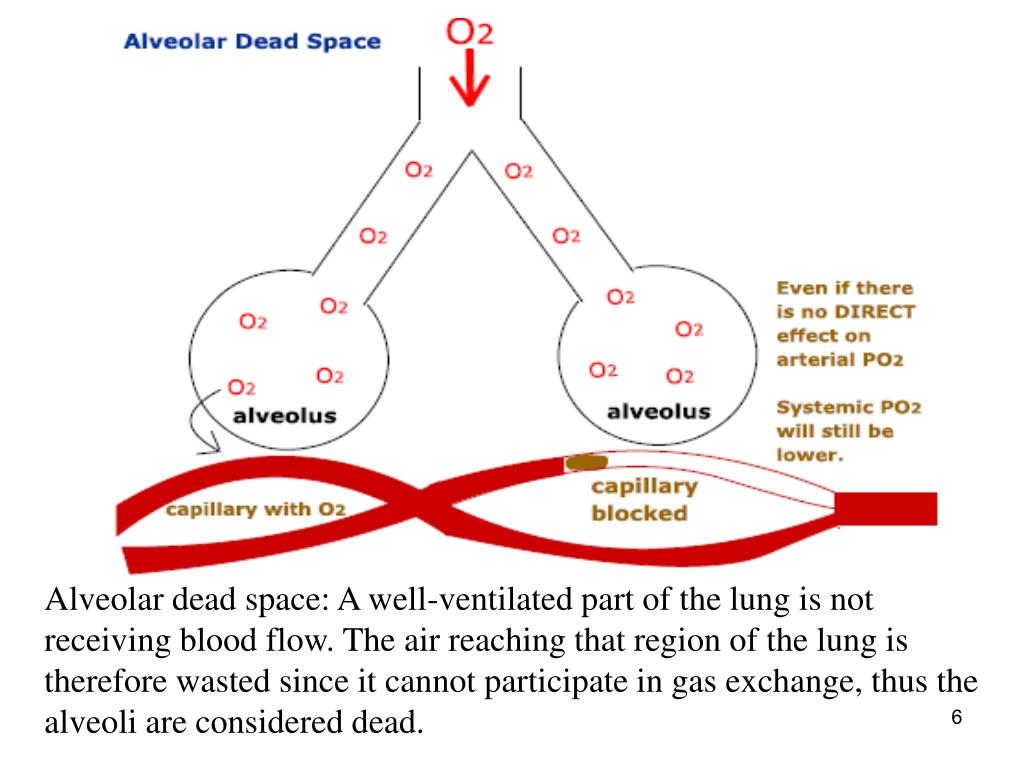

Some apparatus dead space may actually reduce total dead space, as an ETT bypasses the majority of anatomical dead space of the patient (nasopharynx).ĭead space from the patient. Types of Dead Spaceĭead space from equipment, such as tubes ventilator circuitry.

Physiologic dead space INCLUDES the anatomic dead space. The effects of inspiratory flow resistance, respiratory dead space such as that of a full-face mask, and moderate exercise and maximal exercise were.

The study outcome was mortality before hospital. Glomerular Filtration and Tubular Functionĭead space is the proportion of minute ventilation which does not participate in gas exchange. the physiologic dead space is the total volume of the lungs that does not participate in gas exchange. The physiologic dead space represents the amount of air that is inspired but does not take part in gas exchange. Additional clinical and physiological variables were analyzed with the use of multiple logistic regression. (5) where Pet co2 is equal to use to calculate total (apparatus + anatomic + physiologic) dead-space fraction of tidal volume. Arterial CO 2 tension (PaCO 2) and physiologic dead space (V D) are not routinely measured during clinical cardiopulmonary exercise testing (CPET).Abnormal changes in PaCO 2 accompanied by increased V D directly contribute to impaired exercise ventilatory function in heart failure (HF). Functional Anatomy and Control of Blood Flow Dead space (V D /V T) can be determined from a variant of the Bohr equation: (4) or.


 0 kommentar(er)
0 kommentar(er)
